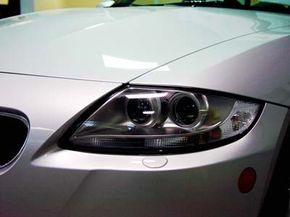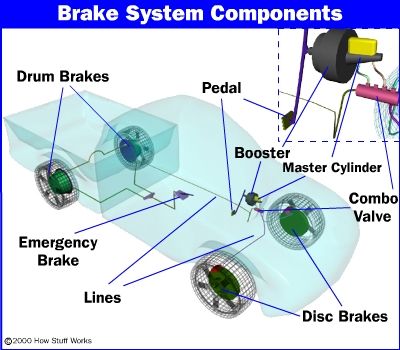You're driving home from a weekend vacation. It's late at night, and the winding two-lane road has no streetlights. You approach a curve at 40 mph -- slow enough to make the turn, but too fast to stop suddenly if you need to. What's waiting there, just beyond the range of your headlights? A stalled car? A deer?
With adaptive headlights, there's no guessing game. The lights turn their beams around each bend in the road, giving you a better view of what's ahead. Improved night driving isn't a trivial matter -- over 46 percent of fatal accidents in 2006 occurred at night, a number much higher than the proportion of driving done at night [source: FARS Encyclopedia, Public Roads].
Advertisement
In this article, we'll look at how adaptive headlights differ from standard headlights and find out how they can make nighttime driving safer. We'll also look at some headlight innovations in the works.
Standard headlights shine straight ahead, no matter what direction the car is moving. When going around curves, they illuminate the side of the road more than the road itself. Adaptive headlights react to the steering, speed and elevation of the car and automatically adjust to illuminate the road ahead. When the car turns right, the headlights angle to the right. Turn the car left, the headlights angle to the left. This is important not only for the driver of the car with adaptive headlights, but for other drivers on the road as well. The glare of oncoming headlights can cause serious visibility problems. Since adaptive headlights are directed at the road, the incidence of glare is reduced.
A car with adaptive headlights uses electronic sensors to detect the speed of the car, how far the driver has turned the steering wheel, and the yaw of the car. Yaw is the rotation of the car around the vertical axis -- when a car is spinning, for example, its yaw is changing. The sensors direct small electric motors built into the headlight casing to turn the headlights. A typical adaptive headlight can turn the lights up to 15 degrees from center, giving them a 30-degree range of movement [source: Audi].
If 15 degrees of sideward movement isn't enough, such as during low-speed turning in a parking lot or for especially sharp curves, additional lighting can supplement the headlights. Some BMW models are equipped with cornering lights. If the car has fog lights, small reflectors swivel to direct the fog lights off to the side. In the absence of fog lights, an additional side-directed lamp is installed with the headlights. When the car is moving slower than 25 mph (40 km/hour) and turning, the cornering lights can illuminate up to 80 degrees of additional area to the side of the car. When the car speeds up or finishes turning, the lights automatically turn themselves off [source: BMW].
The sensors in an adaptive headlights system prevent the lights from turning when they don't need to. If the car isn't moving or is moving in reverse, the adaptive headlights won't activate. This helps keep the lights from inadvertently blinding other drivers.
Read on to find out what other advantages adaptive headlights can provide -- and what cutting-edge technology the headlights of the future will be using.
Advertisement



